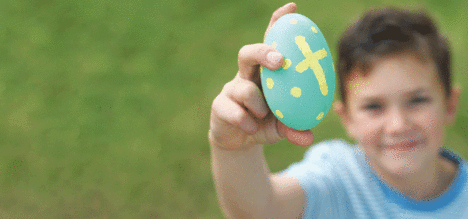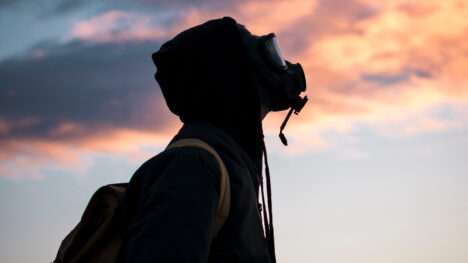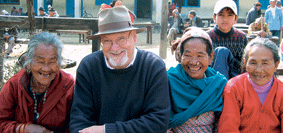Success is measured in different ways, not all of them valid. But as the life of this New Zealander demonstrates and Christine Miles points out, there is a valid way to achieve it: hard work.
Shortly after winning the 2005 US Open, New Zealand golfer Michael Campbell created unease among Maori educators with comments about laziness among his Maori people. To his credit, he was quick to point out that it was not only other Maori who were lazy, but that he had a tendency to laziness himself.
Laziness is often claimed to be the biggest obstacle to success. If a person is able to conquer their indolence, they will achieve. But it is not easily done. Many people have tried but are unsuccessful, primarily because they develop a regimen more appropriate for Superman, not themselves. And every time they fail, which will be often, feelings of guilt and failure develop. Some start to despise themselves; others give up and never try again. Expecting more than is humanly possible is a recipe for failure. So how does one go about achieving?
Believe In Yourself
Australian golfing legend Greg Norman, says, “Setting goals … is an art. The trick is setting them at the right level—neither too low nor too high. A good goal should be lofty enough to inspire hard work, yet realistic enough to provide solid hope of attainment.”
Obviously this was something that came naturally to 2005 US Open winner Michael Campbell, who set his goals early in life. As a 13-year-old on his first day at school, he introduced himself “as a Maori boy from Titahi Bay, New Zealand,” adding that when he “grew up” he wanted “to be a professional golfer—and be the best in the world.” His classmates roared with laughter. If only they’d known the future (or even the present), they might not have been so ready to display their ignorance.
“They thought golf was for old men. They didn’t understand. They obviously hadn’t watched the top players on television, or felt that satisfaction that comes from playing a good golf shot. The other kids were welcome to pursue whatever careers they wanted, but I knew what I was going to be. The only problem really was that I didn’t know how to go about becoming a professional.”
“I was 13 and dreamt of playing golf for a living. What could be better than doing something you loved, and getting loads of money for it? At that time I didn’t think about having to beat 143 other guys every week if I was going to win. I had no idea what path or direction would have to be taken to turn my dreams into reality. I just wanted to go out there and be a pro golfer. When you’re 13, you think it just happens because you want it to.”
Work At Your Game
Campbell was barely five years old when he began caddying for his father, Thomas, on the local course. The buggy and bag were bigger than he was, but there was no complaint. While going round the course Campbell would get out a club and ball and have a hit himself.
“By the time I was nine, Dad [who is left-handed], had got down to a nine or 10 handicap, and I wanted to start playing as well,” says Campbell. “For six months I whacked balls around the lawn left-handed. We always seemed to be having new windows put in. I’m surprised Mum didn’t stop me. But she didn’t. Quite the opposite. While I must have been driving her mad, she was supportive of what I wanted to do. The way Mum and Dad were behind me all the way through has had a lot of influence on what I am doing today.”
Ignore Your Critics
TV watchers, who tuned in to the US Open in June 2005, saw Campbell stride toward the 18th set to win. He’d arrived at Pinehurst in North Carolina ranked 80th. The Chicago Tribune dismissively lumped him with a bunch of no-hopers as “a guy who was born in New Zealand into a Maori tribe … who has missed the US Open cut four years in a row.”
Instead, Campbell shocked the golfing world with his even-par, 280-shot victory, becoming only the second New Zealander to win a major. Sir Bob Charles, who won the British Open 42 years before, was in Florida watching on television as Campbell joined the select club.
“I take my hat off to him,” said Sir Bob. “It’s a wonderful achievement. To win a major, you have to play good, have a bit of luck on your side, and make the putts when you need them. He did all those things.”
“It’s been a journey, my career,” says Campbell, as he reflects on the moment when he realised that he’d won. “I was thinking about people back home in New Zealand, and my wife, Julie, and my two boys, Thomas and Jordan, because they couldn’t be with me.”
Push Through The Pain
In 1995, Campbell injured his wrist during the second round of the AMP Air New Zealand Open at The Grange.
Various doctors provided different diagnoses. Rest would be prescribed one day, the next another specialist would be suggesting surgery might be the best plan of attack. Nothing was certain except that Michael Campbell wouldn’t be swinging a golf club for a few weeks. Holding anything in his left hand without supporting his wrist was difficult enough without thinking of trying to hit a golf ball.
Eventually the medical experts reached an agreement. In layman’s terms the sheath that holds the tendons together in his wrist had come away. Time, it was suggested, would allow the sheath to reattach itself and there was no reason it shouldn’t be as good as new, with a bit of luck.
Campbell went to Australia where another specialist made a support for the wrist, ready for when he resumed golf. That artificial aid proved to be no help, but at the time Campbell was prepared to try anything. At one point he tried a poultice used by horse trainers to clear tendon problems in their animals!
“I was devastated at the time, absolutely devastated,” says Campbell. “You try to remain positive but it isn’t easy. How long would it be before I could play again? Would I play again? I was thinking good things and bad things, mostly bad things …”
Sports journalist Russell Gray was present when Campbell returned to the golf course after a rest period of seven weeks. “The familiar surroundings of Manor Park provided the setting for the start of Michael Campbell’s return to golf,” he recalled. “Finally it was time to head for the practice fairway, with Campbell admitting he was apprehensive at the thought of picking up a club after such a lay-off. As Campbell swung the club face through the ball, he shouted in agony and dropped the club onto the ground. It seemed his world was about to fall apart. Seven weeks rest and he still couldn’t hit a golf ball.”
That was when coach Mal Tongue took charge. When golfer Greg Turner had sustained a similar injury, he asked Tongue to help him modify his swing. That exercise, which proved to be a success, prepared Tongue for what was happening now.
“What happened over the next two hours was astonishing,” says Gray. “By the time the session ended, Campbell was hitting the ball straight down the fairway and laughing as each shot was completed without pain. The only sign there had been an injury was a brace Tongue had attached to Campbell’s right arm to help him adjust the way he was swinging.”
Technically he was swinging better than at any time, Campbell says. “My swing hadn’t been that good technically, despite my results, in 1995. Mal had noticed one or two glitches early in the year, but we adopted the policy of ‘if it’s not broken don’t fix it.’ Once it broke, we set about fixing it.”
“I didn’t know what to think after that first swing. The pain, which shot up my arm, was awful. The negative thoughts came rushing back, but Mal stayed composed and soon had me convinced that we would get it right.”
Be Persistent
Campbell’s poor form continued with embarrassing struggles and he eventually lost his tour card. He had to rebuild his golf swing, but most of all he had to regain his confidence. At times he had doubts about his future as a professional golfer. After
Golf is a game with many variables: the individual, the course, the weather, a tough lie. The margins can be so small, and yet so great. It can be the one centimetre difference between your ball resting on the fairway or in a divot, between a putt lipping out or dropping. Ken Hodge, a sports psychologist, described Campbell’s return to form as “an inspiration.” “[People] could do worse than look at how Campbell handled himself during his slump,” he says, “and how he worked hard to regain his confidence.”
Keep On Believing
Before the US Open, Campbell spoke to a friend about his golf game. “It’s like rowing a boat. Sometimes you track left and then right, and getting to your goal takes a little bit longer. But you still get there. My goal is still to fulfil my dreams.”
That is the thing with Michael Campbell. He never stopped believing, even when others did. And now he’s not only a Maori boy from Titahi Bay with high aspirations, he is a champion.
Give Something Back
Winning the World Match Play Championship title at Wentworth, England, in September, consolidated Campbell’s US Open win, and marks him a champion who has come of age. But despite the success and the ensuing sponsorship offers that will financially set him up for life, Campbell remained unfazed, and focuses on more altruistic life goals. He says his plan is to become a role model for young golfers in New Zealand.
“My big buzz, really, is to have some sort of influence on junior golf back home,” Campbell said after beating Ireland’s Paul McGinley two and one in the 36-hole final, claiming a cheque for one million pounds, the richest first prize in golf. “My legacy is to one day see these top New Zealand golfers, young kids, coming through and winning lots of majors. I want to be a part of that when I retire, helping financially or helping morally and coaching. That’s really important to me.”









